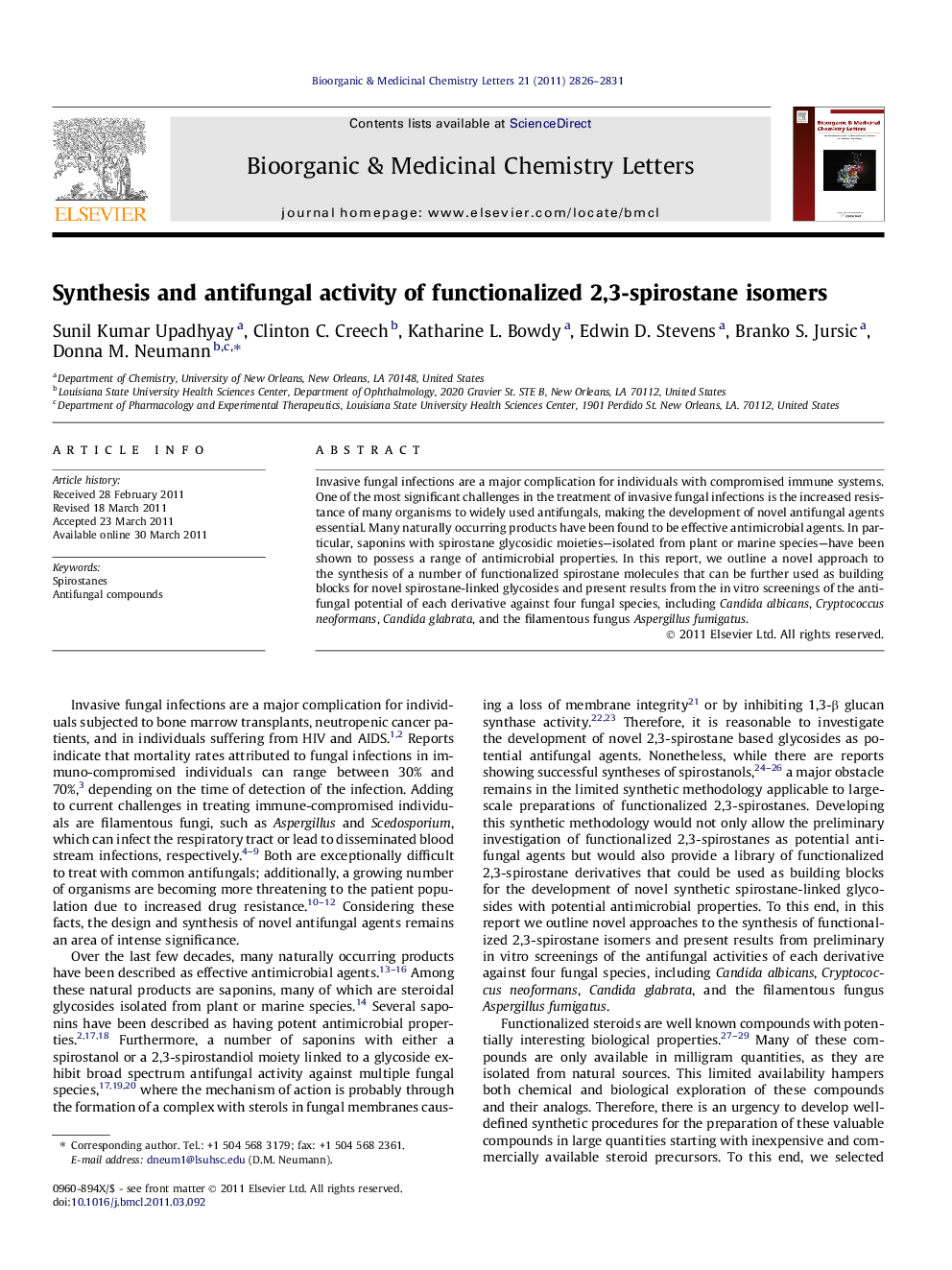| Article ID | Journal | Published Year | Pages | File Type |
|---|---|---|---|---|
| 1361908 | Bioorganic & Medicinal Chemistry Letters | 2011 | 6 Pages |
Invasive fungal infections are a major complication for individuals with compromised immune systems. One of the most significant challenges in the treatment of invasive fungal infections is the increased resistance of many organisms to widely used antifungals, making the development of novel antifungal agents essential. Many naturally occurring products have been found to be effective antimicrobial agents. In particular, saponins with spirostane glycosidic moieties—isolated from plant or marine species—have been shown to possess a range of antimicrobial properties. In this report, we outline a novel approach to the synthesis of a number of functionalized spirostane molecules that can be further used as building blocks for novel spirostane-linked glycosides and present results from the in vitro screenings of the antifungal potential of each derivative against four fungal species, including Candida albicans, Cryptococcus neoformans, Candida glabrata, and the filamentous fungus Aspergillus fumigatus.
Graphical abstractFigure optionsDownload full-size imageDownload as PowerPoint slide
